This winter, Susanne and I went back to South Africa to photograph wildlife. Togeteher we stayed for two weeks in two completely different areas. The first week we spent in the Kgalagadi Transfrontier Park, which is part of the world famous “Kalahari Desert”. We then transferred 1700km to the Hluhluwe-Umfolozi Wildlife Reserve, or “Game Reserve” to be correct. I personally don’t like the expression “game reserve”, as the word “game” is a hunting expression from the old (primitive) times.
Both areas were fantastic and as different as two landscapes can be. The hot, red desert sand of the Kalahari leaves only room for highly specialized species. The area looks gorgeous and the vast open areas are home to lions, cheetahs and leopards and lots of antelopes. Hluhluwe on the other hand is contrastingly hilly, moist and green. When you go there after having visited the Kalahari, it feels like entering a rain forest.
In both areas we tested to film wildlife with the EOS 7D. All in all we got some 340 different clips of wildlife in high-definition 1920×1080 HD which is equals more than 60 GB of memory. Quite a lot and not very easy to handle for a computer.
The video functionality of the 7D is very simple. Just switch a button and then you can start filming. The settings are very much alike the digital SLR. You can chose between the modes P, Av, Tv and M. It is easy to adjust the exposure by overexposing or underexposing. Meanwhile you can still take photographs by just pressing the shutter button. However, this will make the film “jump” as the camera stops recording the video while you photograph. All in all it is a great to combine photographs with moving videos.
Here is a white rhino that we came across in Hluhluwe Umfolozi wildlife reserve. Watching this rhinos always makes me feel like being a part of the movie Jurassic Park.
If you have the bandwidth, you should watch it in HD.
And here some more images from the Kalahari and Hluhluwe Umfolozi. All images are taken with the Canon EOS 7D.
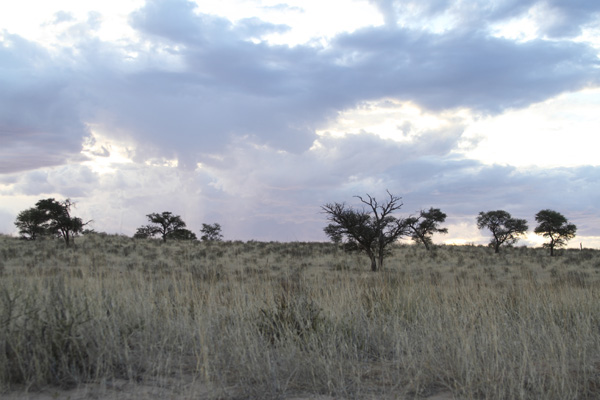
Open savanna in the Kgalagadi Transfrontier Park, Kalahari. Canon EOS 7D, EF 28-135mm, Focal length 41mm, 1/100s, f5.0, ISO 200, Exposure Compensation +2/3.
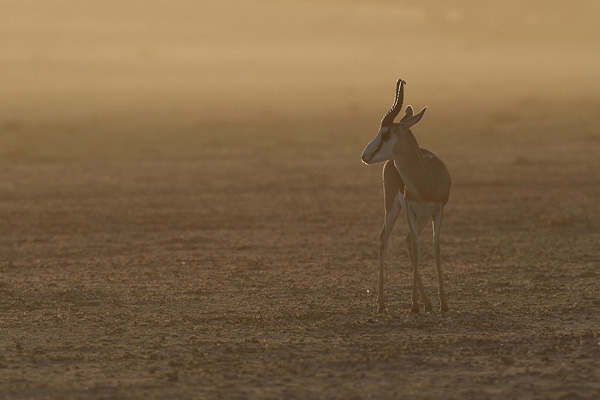
Springbok in early morning backlight. I love this reddish-soft African morning light with a slight mixture of dust and fog in the air. This perfect morning mood unfortunately only lasts for a quarter of an hour until the sun gets up and the magic is gone. Kalahari 2009-12-30. EOS 7D, EF 4/500mm IS, 1/800s, f6.3, ISO 500, Exposure Compensation +1/3.
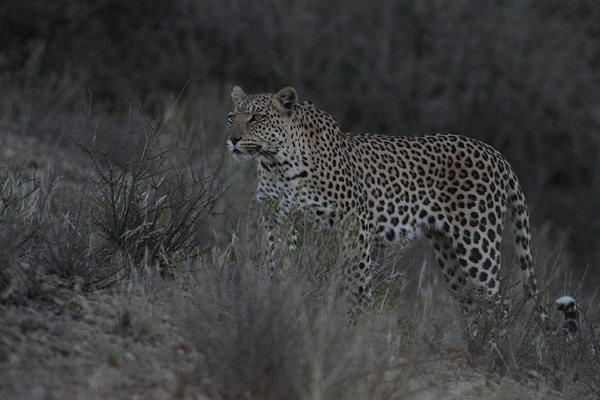
Leopard in the evening just after the sun has set behind the hills. It is still light but shady. In bright daylight, the leopard would be well camouflaged in the dry vegetation. Now, the lack of sunlight makes the animal stand out against the colors of the environment. We regularly saw a leopard mother and her two small cubs close to our camp. She was hiding the cubs in the cave and was watching the cave from different trees in the area. We even saw her playing with the cubs. Kalahari 2009-12-26. EOS 7D, EF 4/500mm IS, 1/500s, f4, ISO 200, Exposure Compensation -1/3.
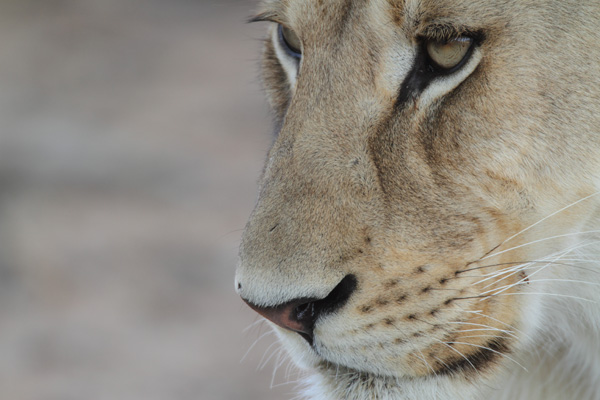
Portrait of a lion. This is a teenager in a flock of four lions that were resting next to a water hole for a day. No antelopes dared to drink while the lions were lying underneath a tree nearby. The lions were standing in the shade which results in rather soft colors, even in the middle of the day. Kalahari 2009-12-31. EOS 7D, EF 4/500mm IS with 1.4x Extender II, 1/250s, f5.6, ISO 250.
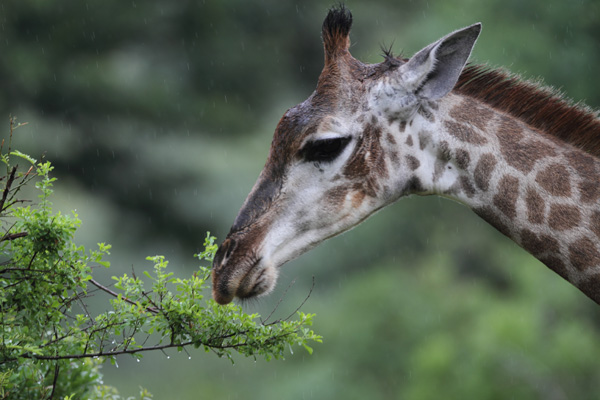
Giraffe on a rainy day in the Hluhluwe Umfolozi Wildlife Reserve. This is a good example of a photograph that contains unsharp, moving elements due to a rather long exposure time of 1/160s. The moving raindrops stand well out in front of the darker vegetation, adding some “life” to the photograph. 2010-01-04. EOS 7D, EF 2.8/300mm IS, 1/160s, f2.8, ISO 160, Exposure Compensation -2/3.
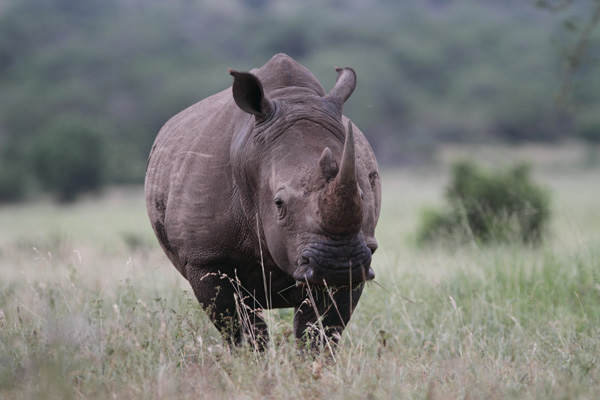
White Rhino in the Hluhluwe Umfolozi Wildlife Reserve. A classical image of one of the most impressive mammals that I have ever seen. This southern race of the White Rhino has almost been extinct and the story of their survival is like a fairy tale. The last surviving individuals were here in Hluhluwe Umfolozi thanks to Dr. Ian Player, one of the world’s most outstanding conservationists and environmental statesmen. By starting “operation rhino” and disobeying the rules of the governments, he and his crew made sure that the rhinos survived and that they could be reintroduced in other areas in southern Africa. This is another one of many examples that show that changes always take place because of the enthusiasm of individuals and never because of governments. 2010-01-03. EOS 7D, EF 2.8/300mm IS, 1/250s, f2.8, ISO 160, Exposure Compensation -2/3.
